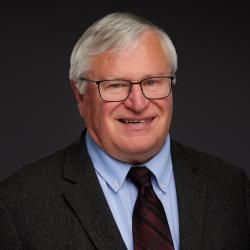“Humans are not well-suited to radical immanence.” After all, those who believe only in what they can see are still made in the image of God and possess a supernatural purpose even when they reject any kind of transcendent reality. But such a disconnect creates anxiety and malaise. As a result, substitutes for transcendence are pursued, which only make things worse. So says R.J. Snell in his new book, Lost in the Chaos: Immanence, Despair, Hope, a penetrating analysis of contemporary secularism.
Snell is building on the work of the Canadian philosopher Charles Taylor, whose book A Secular Age argues that humans tend to think and perceive things through a “frame,” which, like a picture frame, limits what they can accept and imagine. Today, people tend to operate within what Taylor calls an “immanent frame” that fixates on the tangible and the immediately perceivable. There was a time, however, when people had a “transcendent frame,” through which everyone discerned a reality beyond the tangible and that gave the tangible meaning. The physical world was “enchanted,” that is to say, to one degree or another, it was “porous” to the supernatural, to gods or to God.
Secularism is not a matter of modern science replacing religion, Taylor shows, since religion has continued to flourish during modernity. The immanent frame allows for an “open-world” in which the transcendent remains accessible, though modern-day believers still embrace their faith as only one option of many and exercise it through an immanent lens.
But the immanent frame also allows for a “closed world,” the notion that the interior and material realm is all there is. Says Snell, drawing on Taylor, belief in a closed world is not a conclusion from rational or scientific argument. Rather, it is “a moral stance, an ethical commitment. … Secularity is demanded by a commitment to certain ‘values’” held by the person who insists on independence, nonconformity, resistance to authority, and refusal of the “consolations of an enchanted world.”
The coming apart of the “premodern” transcendent frame with the Enlightenment era resulted in an Age of Reform, a confident time of revolutions, social and political changes, and the new ideas of “modernism,” all celebrating a sense of liberation from the supernatural and otherworldly. But such reforms were often built on the unacknowledged remnants of the transcendent order. If matter is all there is, and matter can be reduced to physics and chemistry, meaning is impossible. “A universe of matter in motion reduces humans to matter in motion, ‘wet robots’ as we are sometimes called.”
If the universe isn’t “porous” to the transcendent, human beings aren’t either. We become the source of meaning, but that meaning is pretty much pointless, having no relationship to the outside world, which is also pointless. The result is what Taylor calls the “buffered self” in which we are self-enclosed, separated from others and the world, and autonomous. Today postmodernism has finished off any sense of transcendence. As Snell says, “Postmodernism and its progenitors critiqued and deconstructed any and every claim of order, harmony, or rationality as nothing more than projections of power and force.”
This allows for no hope of any kind. Life itself is no longer necessarily considered a good thing. Along with the decline in the number of marriages to the lowest level in history is the rejection of parenthood. Children have always been the sign of hope, Snell says. But today many young adults are getting sterilized on the grounds that it is immoral to bring children into this world. Coupled with the acceptance of abortion, the conclusion is that “it is not good to be, not worth giving life to another.”
So what can anyone do in this climate of despair? Snell examines three options. The first is “frenzied activism.” He notes the difference between “natural rights,” grounded in objective reality and transcendent morality, and today’s “human rights,” grounded only in the buffered self. The latter have no content. “They are formless aspirations to equality rather than substantive claims about the good.” They are purely negative: freedom as the absence of limits; autonomy as the lack of interference by others; diversity as nonconformity and nonuniformity.
The old progressives—whether Marxists, socialists, or New Deal liberals—wanted to construct a better world, and they had an idea of what that would look like. “The new frenzy is an activism not of construction but of negation” in which “the point is to undo, to liberate and emancipate.”
Thus, “the mode is one of undoing, taking apart, deconstructing, and critique, all in the name of emancipation, liberation, self-determination, and choice.”
This frenzy of negation is all-consuming and self-consuming. Snell notes how the sexual revolution, predicated on infertility and the termination of pregnancy, now turns against the sexed body itself, with the ideology of transgenderism.
The frenzy of negation will never end, it should be noted, for these activists “do not seek anything.” Thus, there is no goal, just a constant conflict against objective reality.
A second option in fighting despair is what Snell calls “fever dreams of rationalism.” This is the impulse to “fix things” by imposing some political ideology that is oblivious to human limits. Thus we have wokeness on the left and illiberal conservatism on the right.
It is little wonder that those who assume that what is immanent is the only reality would turn to politics to solve their problems. But the pursuit of “total politics” is bound to fail because political power and the state are simply incompetent to solve the problems of the human condition. And a state that absorbs the function of the family and other civil associations is particularly dangerous.
The third option Snell explores is to pursue a “project of re-enchantment.” That is, to imagine elements of the old enchanted universe even as one retains the “buffered self.”
Snell notes the popularity of fantasy—in literature, movies, digital games, and “cosplay” gatherings. Heroes with superpowers, dragon fighting, knights and fair maidens, elves and witches, and other kinds of “magic” that some people take very seriously, all evoke the “enchanted” world that has been lost. But this is “safe fantasy,” a “simulacrum” of premodern times that imposes no obligations and that we know is not real, and therefore not a danger to our protected selves.
Other projects of re-enchantment include neo-paganism (both the “hard paganism” of trying to recover pre-Christian religions and the “soft paganism” of New Age spiritualism) and political fantasies such as establishing a theocracy, returning to a monarchy, the integralist project of restoring the temporal authority of the pope, or other utterly unfeasible and escapist theories.
Snell’s final three chapters offer a foundation for genuine hope, the real solution to being lost in the chaos—namely, Christianity. More specifically, Catholicism.
He takes a deep dive into Thomist metaphysics, showing how it can account for modern science and change while keeping everything porous to the supernatural. He then offers a quite definitive refutation of the secularist notion that science provides the only valid kind of knowledge. He does so by showing that reality is multifaceted such that “reason” is multifaceted, too. And, finally, he writes about hope itself, not as a subjective feeling of optimism but as a virtue made possible by God. The conclusion is built around Christ and the virtues of the Virgin Mary.
This book offers a powerful apologetic with its dismantling of secularism. It is a distinctly Catholic apologetic, but it applies perhaps more than Snell realizes to Protestants, too.
Snell, following Taylor, blames the Reformation for the loss of transcendence, making the extraordinary claim that the Reformation was not mainly about the authority of Scripture or justification by faith but the “diminution of the Sacrament.” If the Eucharist is the Real Presence of Christ, then something physical is charged with the supernatural. If not, then the whole “transcendent frame” comes apart.
This would be news to Luther and the Lutherans, who then and ever since have insisted not only that Christ is really present in the Eucharist but that the bread is Christ’s body and the wine is Christ’s blood. Once again, Anglo-American scholarship, which knows mainly Reformed Protestantism, tends to assume that Luther and Calvin (and Zwingli) are interchangeable.
But Snell is unfair to Calvin also. He says that the doctrine of Providence reduced the physical laws of nature and led inexorably to the detached deity and the clockwork universe of Deism. But Providence teaches that every detail of the created order is directed and controlled by God. All things, therefore, are “porous” to God, that everything that happens is due to the personal activity of God. Surely Providence is the opposite of Deism!
As for other Protestants who did not go along with the Protestant sacramentalism of the Lutherans, did the Anabaptists not think their Christian communities were porous to God? One can see the “porous self” in Anglicans like George Herbert and Puritans like John Milton.
Perhaps the Reformation had to do with individual Christians becoming “porous” to God.
Maybe the Reformation was a continuation and culmination of the transcendent world, which would soon start to collapse, as the Enlightenment ignited in (Catholic) France sparked a reaction against both Catholic and Protestant orthodoxy.
As Snell admits, Christianity and Judaism, with their critique of paganism and rejection of idolatry, played a big part in banishing the “magic” and “enchantment” from nature. And yet, while God is transcendent, He is also immanent. Indeed, Christianity is all about how the transcendent God entered the “immanent frame.” The church would do well to emphasize the doctrines of Creation, Incarnation, Atonement, Resurrection, Sacraments, and Vocation, all of which should resonate with those who have an “immanent frame.”
Snell thinks Christianity may well come back. The times are auspicious. “There is very little reason to accommodate and bend ourselves to the whims of the modern world, now that the world loathes and detests itself almost completely,” he says.
The false visions of progress, science, political ideologies, utopias, and exclusive humanism are exposed and unmasked. Ours is a hopeless age and thus an age of great opportunity for the Gospel. From a human point of view things seem bleak for the Church and the Faith; from a supernatural point of view ours is a time of remarkable clarity. Idols are known to be idols, so perhaps we might try proclaiming the one true God.

